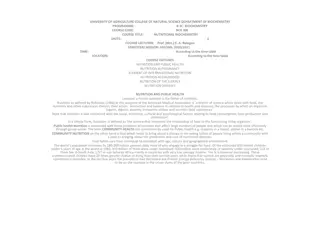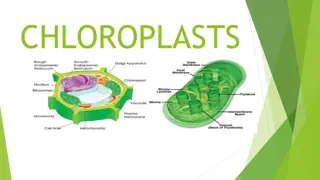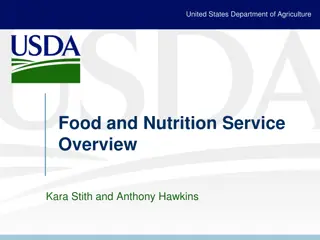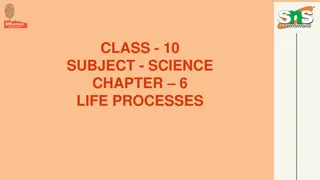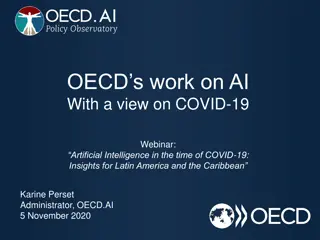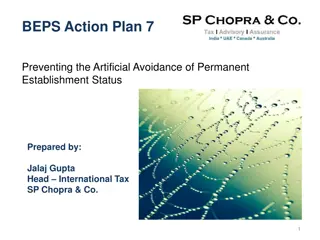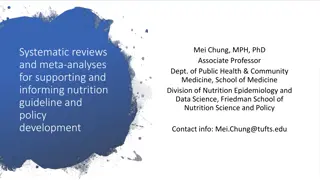Understanding the OECD Nutrition Policy Marker (NPM)
The OECD Nutrition Policy Marker (NPM) is a voluntary tool to identify donor investments with a nutrition objective. It helps mainstream nutrition in large-scale programs to improve outcomes and accountability. The NPM is applied at the project level to track investments and promote transparency in aid for nutrition. By integrating nutrition objectives into project designs, it aims to reduce malnutrition globally.
Download Presentation

Please find below an Image/Link to download the presentation.
The content on the website is provided AS IS for your information and personal use only. It may not be sold, licensed, or shared on other websites without obtaining consent from the author. Download presentation by click this link. If you encounter any issues during the download, it is possible that the publisher has removed the file from their server.
E N D
Presentation Transcript
WHAT IS THE OECD NUTRITION POLICY MARKER (NPM)? A voluntary, qualitative tool to identify donor investments with a nutrition objective, making data publicly available OECD Guideline defines eligibility: It can be used across sector codes A project is eligible for an NPM score if: 1. It is reported under the basic nutrition purpose code, or It can track the number and share of projects with an NPM score within a sector 2. It contributes to a nutrition-sensitive outcome and the project documentation includes an explicit nutrition objective or indicator It can track commitments and disbursements to projects with a nutrition objective or indicator over time (NOT the estimated amount going specifically to nutrition actions) NPM Value Nutrition is the principal objective of the action and is fundamental in its design and expected results Nutrition is an important and deliberate objective, but not the principal reason for undertaking the action Action has been screened against the marker, but has not been found to target nutrition in any significant way 2 1 0
WHY IS THE NPM IMPORTANT? Overall goal for nutrition programming more broadly: To mainstream nutrition within large-scale programs across sectors to optimize use of resources and improve nutrition outcomes The NPM contributes to this goal in two ways: 1. Actively identify opportunities for improved nutrition mainstreaming: Could provide a process for program officers to review large-scale programs for nutrition relevance, encouraging adaptation of programs and optimizing nutrition 2. Track progress to improve transparency and accountability: Provides greater insight into multi-sectoral aid for nutrition than previously available, standardized across donors More robust data will allow us to improve planning and coordination to tackle complex problems, better target and track investments in nutrition, and ultimately scale up more sustainable programs with nutrition actions across sectors to reduce the global burden of malnutrition.
FEATURES THAT MAKE THE NPM A POWERFUL RESOURCE TRACKING TOOL The NPM is most often* applied by project/program officers who know the project best, instead of by a central data or statistics team. 1. The NPM is most often* applied at the beginning of a project, instead of retroactively, meaning it can be a conversation starter about nutrition integration and inform design. 2. The NPM data can be disaggregated by sector, or any other field reported to the CRS, which improves transparency, granular information, and the ability to answer more complex questions about the nutrition financing landscape. 3. The NPM data is reported to the publicly available OECD CRS database, which means all data users can see which projects received NPM scores, greatly improving reporting transparency and accountability. 4. *A note on application: These features are based on best practices for NPM application, which several SDN members have achieved. Some SDN members are not yet applying the policy marker during project design but are working toward doing so.
BENEFITS OF THE NPM AS REPORTED BY SDN MEMBERS Accuracy: Because the NPM can be applied at the start of the project by the project/program officers themselves,it is more likely to be accurate. Staff buy-in and sensitization:Since application is often done by project/program officers instead of a centralized data or statistics team,more staff are brought into the resource tracking process and therefore understand how the estimates are generated, what they re used for, and why they re important. Nutrition mainstreaming: Since a project can be reviewed for the appropriate NPM score during design, the NPM can be an effective internal advocacy tool to promote increased nutrition mainstreaming through the inclusion of nutrition objectives and/or indicators that may not otherwise have been considered. Better access to data when you need it: The resource tracking information is available significantly earlier than with retroactive application methods (e.g., 2013 SDN method) because the NPM score is visible the moment the programs are added to the internal reporting system(s). When it is integrated within internal systems, country offices can also access it to respond to requests from country governments. (Note there is a two-year lag for public reporting via the OECD CRS.) Breaks down silos:Seeing nutrition investments across all sectors in the CRS allows organizations to assess trends and fluctuations beyond basic nutrition, bringing more nuance to the nutrition discussion and allowing users to tell a story across bureaus. Demonstrate leadership: Commitment to this level of transparency, proactivity, and granular evidence generation demonstrates institutional leadership in data-driven programming.





